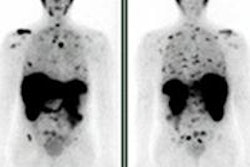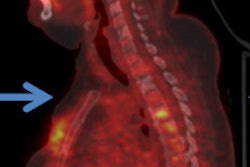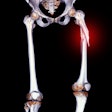Dear AuntMinnie Member,
CT lung cancer screening is cost-effective, and from an economic perspective it compares favorably to other screening tests such as mammography, according to results presented on Monday at a meeting of the U.S. National Cancer Institute.
In a secondary analysis of data from the National Lung Screening Trial (NLST), researchers found that low-dose CT lung cancer screening has a better cost-benefit profile than mammography, saving three lives in a population of 1,000 current and former heavy smokers who were screened after seven years. For point of comparison, most data indicate that mammography saves one life for every 1,000 women screened over 10 years.
It's not a total apples-to-apples comparison, as mammography screens average-risk women, while CT screening is only being proposed for high-risk individuals. But the numbers highlight the dramatic benefit that CT lung cancer screening may be able to deliver from a public health perspective.
The question now becomes: What happens with the numbers? The U.S. Preventive Services Task Force (USPSTF) is believed to be preparing an evaluation of CT lung cancer screening, and the NLST numbers presented this week could heavily influence the group's perspective. If the USPSTF makes a positive recommendation, then Medicare reimbursement for CT lung cancer screening could be on the horizon.
Read more about Monday's meeting by clicking here, or visit our CT Digital Community at ct.auntminnie.com. While you're there, also check out this story on a technique using wide-area 640-slice CT to dramatically reduce contrast dose.
U.S. gamma cameras getting older
In other news, the average age is rising for the installed base of gamma cameras at nuclear cardiology labs in the U.S., according to a study presented at the Society for Nuclear Medicine and Molecular Imaging meeting earlier this month. Or is it?
University of Missouri researchers found that the average age of U.S. gamma cameras grew by two years between 2009 and 2011, most likely influenced by the economic slowdown and reimbursement pressure. But another driving force could be site accreditation, which switched from voluntary to mandatory at the end of 2012.
The study looked only at labs applying for accreditation, and many facilities with older cameras may not have participated in accreditation prior to its becoming mandatory -- thus, the new survey is now covering a broader section of the installed base. Read more by clicking here.
While you're in the Molecular Imaging Digital Community, swing by and read this story about how a team of researchers found fault with the current state of published research backing the effectiveness of PET for cancer surveillance.
They believe that existing studies lack standard definitions for surveillance, use different scanning protocols, and have inconsistent reports of test accuracy. The authors advocate the creation of common definitions of surveillance and surveillance protocols; find out how by visiting the community at molecular.auntminnie.com.




















